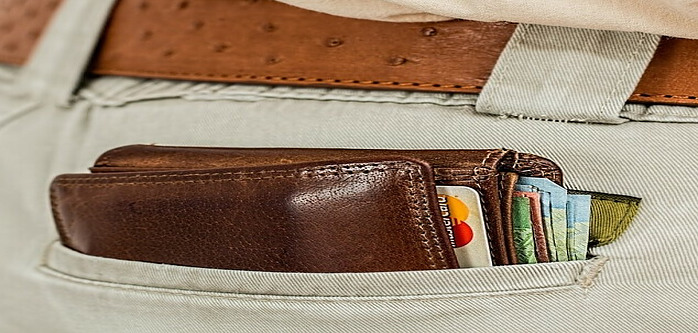
Imagine you’re pedaling down the bike path, the wind in your face, and you’re feeling the boost every time your foot pushes down on the pedal. That exhilaration comes from a little thing called pedal-assist technology. In essence, pedal assist is an electronic system on e-bikes, that adds power to your pedaling effort, making it easier to cover longer distances and climb hills without breaking too much of a sweat. It’s kind of like having a silent partner pushing you along.
In the heart of this technology lie two types of sensors: cadence and torque. A cadence sensor detects how fast you’re pedaling – simply put, it tracks the rhythm of your pedaling. The faster you pedal, the more assistance it delivers. It doesn’t care how hard you’re pressing on the pedals; it just wants to keep the beat going.
On the other side, the torque sensor is the more sophisticated cousin. It not only senses that you’re pedaling but also how much pressure you’re applying. This means it adjusts the motor’s power based on the force of your pedal stroke – the harder you press, the more juice you get.
The key difference between these two lies in how they translate your cycling effort into motor assistance. Cadence sensors kick in the power based on pedaling speed, while torque sensors respond to the force behind each pedal. This fundamental difference plays a significant role in how e-bikes with either of these sensors handle and respond to the rider’s input.
The Mechanics of Movement: How Cadence Sensors Propel Your Ride
Understanding how cadence sensors work helps demystify the pedal-assist feature in many modern electric bikes. A cadence sensor primarily detects the rate at which you’re pedaling, the revolutions per minute (RPM). Once you start pedaling, the sensor sends a signal to the bike’s motor to engage and help you along.
Affordability and ease of maintenance are advantages of cadence sensors. They’re less expensive to produce, which usually means a lower price tag for you, the consumer. Because of their simplicity, they typically require less maintenance over the life cycle of your bike.
Yet, it’s not all smooth sailing with cadence sensors. One significant downside is the less natural bike riding experience they offer. Unlike riding a non-assisted bike, there can be a noticeable delay between pedaling and the motor’s assistance kicking in. Additionally, the assist level doesn’t change depending on how hard you pedal, which can sometimes result in a jerky or less controlled ride.
Cadence sensors shine in scenarios where consistent power assistance is preferred over precise control, such as in city commuting. They provide a reliable level of assistance once you hit the pedals, no matter the force you use, which can make for an effortless, if less engaging, ride.

The Force Factor: Torque Sensors and Responsive Riding
The conversation about pedal-assist systems is incomplete without discussing torque sensors. These devices are the heart of an intuitive e-bike experience, measuring the force a rider applies to the pedals and adjusting the motor’s output accordingly. It’s a game of precision, where the bike becomes a natural extension of the rider’s efforts, scaling up assistance as you push harder and easing off when you dial back.
Torque sensors shine with their ability to deliver a ride that feels more like traditional cycling. You get a proportional response, which is especially handy when navigating hilly terrain or starting from a standstill. This responsiveness leads to better control and a sense of unity with your bike that many cyclists cherish. Torque sensors also tend to be more energy efficient since they deliver power depending on the effort produced by the biker: less effort = less consumption.
But excellence comes with a price. E-bikes equipped with torque sensors typically come with higher price tags due to the complexity of the technology. They also require more sophisticated design and engineering, which can translate to higher maintenance needs and costs. It’s a trade-off between enhanced experience and budget considerations.
Those drawn to a more ‘bike-like’ experience, with smoother transitions and a closer resemblance to muscle-powered cycling, will likely lean towards torque sensors despite the cost. Commuters, serious cyclists, and riders in hilly locales often prefer the nuanced assistance torque sensors provide.
Choosing Your Pedal-Assist Path: Comparing Cadence and Torque for Your Needs
Deciding between cadence and torque sensors for your electric bike can feel a bit overwhelming. I want to simplify it for you by highlighting the most important considerations. The most important considerations are the kind of terrain you’ll be tackling, the level of control you desire, and, of course, your budget.
If you’re a casual rider sticking mainly to flat cities or bike paths, a cadence sensor might be all you need. It’s also your friend if you’re keeping an eye on expenditures. However, if you’re someone who craves a ride that feels more like a traditional bike, or if you’re frequently on hills and demand performance, then investing in a torque sensor could bring you greater satisfaction.
Don’t overlook the long-term perspective. While torque sensors may be pricier, they offer nuanced control and can contribute to a more natural ride, which might increase your willingness to use the bike more often. On the other hand, the cost savings of a cadence sensor will be less impactful if you find the ride jarring and thus use the bike less.
I’ve seen firsthand accounts from riders who swear by the responsive nature of torque sensors, while others are perfectly content with the straightforward boost from cadence sensors. Ultimately, it’s about what feels right under your feet and in your hands as you navigate through your journeys as well as your budget. Take your time, maybe try out both systems if possible, and choose the technology that aligns with your riding style and goals.
